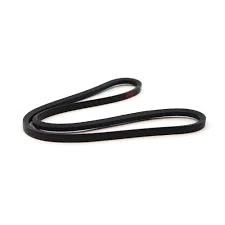- Arabic
- French
- Russian
- Spanish
- Portuguese
- Turkish
- Armenian
- English
- Albanian
- Amharic
- Azerbaijani
- Basque
- Belarusian
- Bengali
- Bosnian
- Bulgarian
- Catalan
- Cebuano
- Corsican
- Croatian
- Czech
- Danish
- Dutch
- Afrikaans
- Esperanto
- Estonian
- Finnish
- Frisian
- Galician
- Georgian
- German
- Greek
- Gujarati
- Haitian Creole
- hausa
- hawaiian
- Hebrew
- Hindi
- Miao
- Hungarian
- Icelandic
- igbo
- Indonesian
- irish
- Italian
- Japanese
- Javanese
- Kannada
- kazakh
- Khmer
- Rwandese
- Korean
- Kurdish
- Kyrgyz
- Lao
- Latin
- Latvian
- Lithuanian
- Luxembourgish
- Macedonian
- Malgashi
- Malay
- Malayalam
- Maltese
- Maori
- Marathi
- Mongolian
- Myanmar
- Nepali
- Norwegian
- Norwegian
- Occitan
- Pashto
- Persian
- Polish
- Punjabi
- Romanian
- Samoan
- Scottish Gaelic
- Serbian
- Sesotho
- Shona
- Sindhi
- Sinhala
- Slovak
- Slovenian
- Somali
- Sundanese
- Swahili
- Swedish
- Tagalog
- Tajik
- Tamil
- Tatar
- Telugu
- Thai
- Turkmen
- Ukrainian
- Urdu
- Uighur
- Uzbek
- Vietnamese
- Welsh
- Bantu
- Yiddish
- Yoruba
- Zulu
Nov . 10, 2024 13:32 Back to list
Understanding the Benefits of Single Sided Timing Belts in Modern Engineering Applications
Understanding Single-Sided Timing Belts A Key Component in Mechanical Systems
In the world of mechanical engineering and manufacturing, timing belts play a crucial role in the functionality of various machines and systems. Among them, single-sided timing belts have gained significant attention due to their specific applications and advantages. This article will explore what single-sided timing belts are, their components, applications, and benefits.
What is a Single-Sided Timing Belt?
A single-sided timing belt is a type of synchronous belt that is designed to transfer rotational motion between pulleys with a specific timing. Unlike double-sided belts, which can engage on both sides, single-sided belts have teeth on only one side, allowing for precise control of the position and speed of components. This design ensures that the belt remains engaged with the sprockets, providing accurate timing and reducing slippage.
Components of a Single-Sided Timing Belt
A typical single-sided timing belt consists of several essential components
1. Belt Material The belt is usually made of durable materials like neoprene or polyurethane, which provide flexibility, strength, and resistance to wear.
2. Teeth The belt has a series of evenly spaced teeth that engage with the grooves of the pulleys. These teeth ensure that the belt maintains proper alignment and timing as it moves.
3. Tensioning Systems Proper tension is critical for the efficiency of any timing belt. Tensioning systems, such as idler pulleys or automatic tensioners, maintain the appropriate tension throughout the belt’s operation.
4. Pulleys Single-sided timing belts work in conjunction with pulleys designed specifically to match the belt’s teeth profile. The configuration of the pulleys is essential for ensuring smooth and efficient operation.
Applications of Single-Sided Timing Belts
single sided timing belt

Single-sided timing belts are widely used across various industries due to their unique benefits. Some key applications include
- Automotive Industry These belts are commonly found in engines to synchronize the rotation of the crankshaft and camshaft, ensuring that the engine operates efficiently and without misfiring. - Industrial Machinery In production lines, single-sided timing belts are used for conveyor systems and robotics, where precise movement and timing are critical for operational efficiency.
- Home Appliances Many household devices, such as washing machines and printers, utilize single-sided timing belts to facilitate the accurate movement of components.
- CNC Machines In computer numerical control machines, these belts help in the precise positioning of tools, making them essential for quality manufacturing processes.
Benefits of Single-Sided Timing Belts
The use of single-sided timing belts offers several advantages
1. Efficiency They provide smooth and accurate power transmission, reducing energy loss that can occur with other types of belts. 2. Reduced Wear The construction of single-sided timing belts minimizes wear on the pulleys, leading to longer life expectancy for both the belt and the mechanical components involved.
3. Space-Saving Design With their single-sided design, these belts require less space compared to double-sided alternatives, making them ideal for compact machine designs.
4. Cost-Effectiveness Due to their efficiency and durability, single-sided timing belts can result in lower maintenance costs and longer replacement intervals.
Conclusion
Single-sided timing belts are integral components that ensure precision and efficiency in various mechanical systems. Their unique design and various applications highlight their significance in multiple industries. As technology continues to evolve, the demand for reliable components like single-sided timing belts will undoubtedly increase, solidifying their place in modern engineering. Understanding their functionality, benefits, and applications can assist engineers and manufacturers in making informed decisions about their mechanical systems.
-
Upgrade Power Steering Pump Belt for Smooth, Quiet Operation
NewsAug.27,2025
-
Precision Timing Belt & Chain: Engine Performance & Durability
NewsAug.26,2025
-
Precision Lathe Drive Belts: Durable & Reliable Performance
NewsAug.25,2025
-
84.5 Serpentine Belt: Durable & Precision Fit for Your Engine
NewsAug.24,2025
-
Premium Ribbed Drive Belts for Quiet Power Transmission
NewsAug.23,2025
-
High-Performance Vehicle Timing Belt for Engine Precision
NewsAug.22,2025

